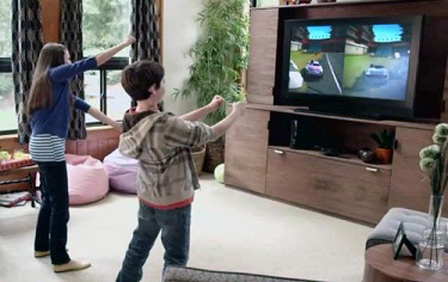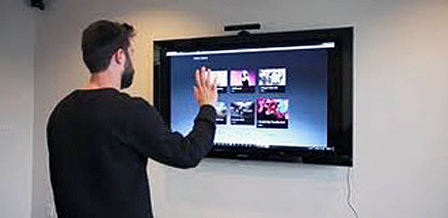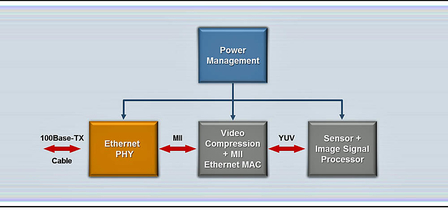Infotainment
The movement towards a connected digital home continues to advance, along with the means by which consumers control such applications and devices. Traditional handheld remote control devices are making way for sensor-based gesture recognition control.
The gaming industry has been one of the first adopters of natural human-machine user interface control. Along with Internet connected games consoles; Parks Associates is forecasting that households will connect more than 260 million game consoles worldwide to the Internet by 2015; sensor-based gesture recognition interaction trends are quickly making traditional games controllers redundant (see figure 1).

Following the launch on November 4, 2010, Microsoft’s Kinect motion sensor sales totaled eight million units in its first 60 days, holding the Guinness World Record of being the "fastest selling consumer electronics device"; faster than even the Apple IPhone and IPad products. Eye opening, 18 million units of the Kinect sensor had been shipped as of January 2012.
Following the success of the Kinect, all the major competing games console manufacturers have introduced similar sensor-based controller-free user interfaces. The trend is not only limited to just gaming consoles. Gesture recognition control as well as face recognition for user profiling and login are being introduced on next generation IPTV and IP-Set Top Boxes.
Even medical applications are considering such technology. Illustrated in figure 2, it provides a very practical solution for monitor control during surgery, where the hands of a surgeon are otherwise occupied.

The functional block diagram of a typical IP Camera is relatively simple (see figure 3). At the frontend, a sensor will continuously capture the image array. The image array and sampling rate will depend upon the required image format and resolution.

Lower costs and power consumption has increased the popularity of CMOS sensors over traditional charge-coupled device (CCD) sensors. Image signal processing is required, including exposure control, white balance, gamma correction, defective pixel and cancelling, before converting the image into a YUV (Y=Luma component, UV=Chrominance component) 8-bit /or 10-bit parallel output format.
Video compression, typically H.264/MPEG 4 or Motion JPEG, reduces video signal bandwidth, sufficiently to encapsulate into an Ethernet frame for streaming. Ethernet support for IEEE 802.1AS Time Synchronization provides a real-time, synchronized network clock for use in the sampling and encapsulation. Cable transmission is provided by the Ethernet PHY transceiver.
Challenges to the power management system are diverse. Low noise, efficient power management is crucial to IP camera applications. Moreover, multiple voltage requirements increase system complexity.
Part Three will discuss challenges to efficient imaging.